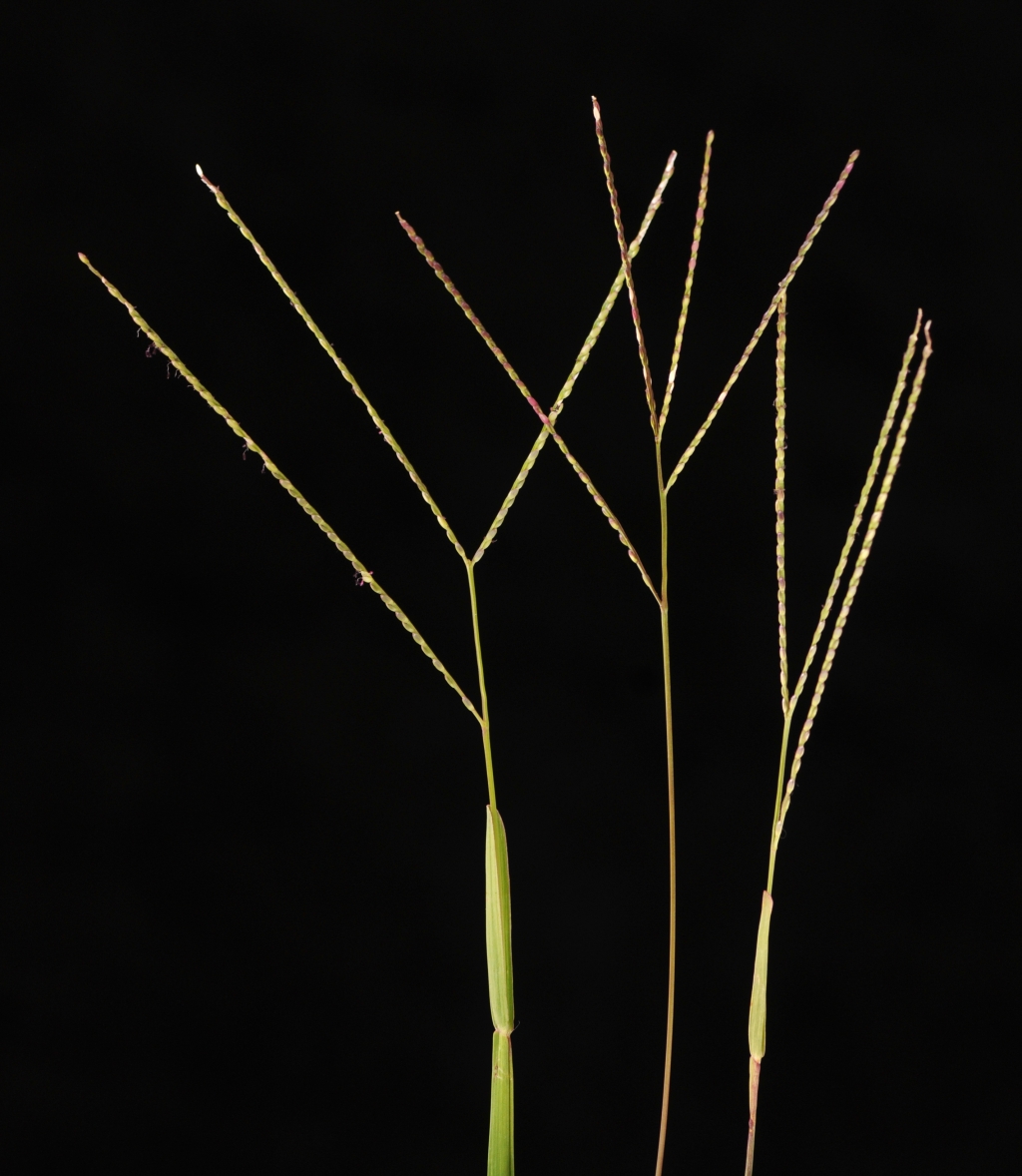Axonopus fissifolius
(Raddi) Kuhlm.Strongly rhizomatous or stoloniferous mat-forming perennial. Culms very slender, weakly erect, to 70 (but often less than 30) cm high, often branched at the node that is concealed within the upper leaf sheat; nodes glabrous. Leaves glabrous or nearly so, sometimes tinged purple; sheaths flattened, keeled; blade flat or channelled, 2–20 cm long and 3–8 mm wide, blunt-tipped, sometimes with a few marginal hairs near base; ligule a ciliate rim, c. 0.5 mm long. Racemes usually 2–4 per inflorescence, each 2–8 cm long and the lowermost usually somewhat distant from the upper. Spikelets virtually sessile, somewhat recessed into axes, elliptic, c. 2 mm long, acute or obtuse; glume 4-nerved (the midvein not developed), equal to spikelet, membranous, sparsely hairy or glabrous; lower (sterile) lemma 2–4-nerved, subequal to glume, glabrous or nearly so; upper (fertile) lemma slightly shorter than spikelet, slightly rounded dorsally, obtuse, smooth to minutely granular. Flowers Oct.–Jun.
VVP, VRiv, MuF, GipP, CVU, EGL, EGU, HSF. Also naturalised WA, SA, Qld, NSW. Indigenous to North and South America. In Victoria, occasionally grown as a lawn or pasture grass, naturalised in a few localities (Echuca, Yea, Melbourne suburbs, Providence Ponds, Bemm River, Genoa area), but not known to have invaded intact native vegetation.
Walsh, N.G. (1994). Poaceae. In: Walsh, N.G.; Entwisle, T.J., Flora of Victoria Vol. 2, Ferns and Allied Plants, Conifers and Monocotyledons, pp. 356–627. Inkata Press, Melbourne.
 Spinning
Spinning



